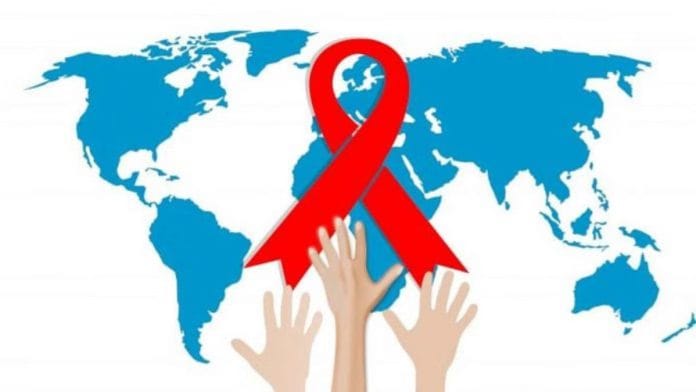New Delhi: The 2025 Global AIDS Update by UNAIDS (Joint United Nations Programme on HIV/AIDS) shows that 30 percent of people surveyed in the 15-49 age group in India reported facing HIV-related stigma and discrimination.
The report titled “AIDS, Crisis And The Power To Transform”, released on 10 July, also highlights that the prevalence of intimate partner violence among partnered or married women living with HIV in the same age group in India stood at 24 percent—just 10 percent less than Liberia, where the prevalence was found to be highest globally. The figures are based on data from 2020-2024.
Also, in India, more than 80 percent of surveyed women aged between 15 and 49 years were reported between 2020 and 2024 to lack autonomy over their sexual choices and reproductive healthcare. Additionally, over 90 percent of them lacked information about contraceptive use.
The 2025 update notes the impact that massive funding cuts by international donors are having on countries most affected by HIV, and how the threat of a funding crisis may hurt global progress in the fight against HIV/AIDS unless countries alter their programming.
According to the UNAIDS Executive Director Winnie Byanyima, the Global HIV response shows a decline of newly HIV infected persons by 40 percent, and of 56 percent deaths since 2010. However, the withdrawal of the US President’s Emergency Plan for AIDS Relief (PEPFAR), the biggest contributor to global response, may lead to 6 million additional people being infected, and an additional 4 million deaths by 2029.
The funding crisis has disrupted treatment and prevention programmes around the world, the report says.
But it also points to the emergence of new prevention tools, like Lenacapavir, a long-acting injectable pre-exposure prophylaxis (PrEP), “which has shown near-complete efficacy in clinical trials”. It can prevent HIV with injection doses twice a year.
The manufacturer of Lenacapavir, Gilead Sciences, has licenced six generic manufacturers, of which Dr Reddy’s Laboratories, Emcure, Hetero, and Mylan—subsidiary of Viatris—operate in India. However, affordability and access are still big challenges.
According to the report, in terms of region-wise distribution, Eastern and Southern Africa saw the highest new HIV infections in 2024 at 37 percent, the lowest being in the Caribbean at one percent. In Asia and the Asia Pacific, of which India is a part, the figure stands at 23 percent.
With respect to people living with HIV in 2024, the highest was reported in Eastern and Southern Africa at 52 percent, or 21.1 million. The lowest number of people was in the Caribbean—one percent, or 3,40,000. In Asia and Asia Pacific, the number was 17 percent, or 6.9 million.
India is among the 13 of the 35 reporting countries that have reached safe injecting targets—90 percent using sterile equipment at last injection.
It is clubbed with South Africa, Thailand and Brazil under Low-Dependency Countries in the matrix of dependency on PEPFAR funding.
The report also mentions that social enterprises help diversify revenue resources. In India, the Mist LGBTQ Foundation runs an online platform to market merchandise, and offer HIV self-testing and PrEP consultations, either free or at a low rate. Another organisation, the Network of Maharashtra People Living with HIV TAAL+ Pharmacy sells antiretroviral and other medicines at discounted prices via corporate social responsibility partnerships.
(Edited by Mannat Chugh)






